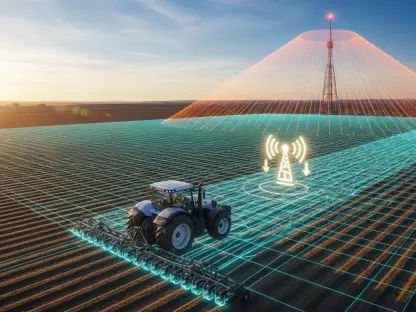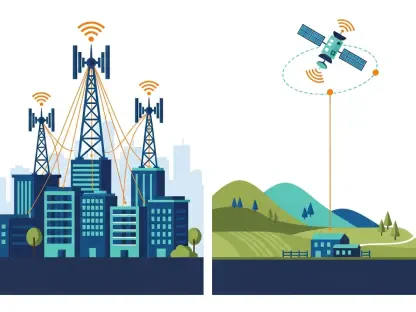Vodafone is at a critical juncture with its open Radio Access Network (RAN) strategy. The recent departure of Santiago “Yago” Tenorio, a prominent figure in the initiative, to Verizon could have been a major shake-up. Despite this, Vodafone remains resolute, driven by other capable leaders and a collaborative vision that aims to integrate future technologies like 6G into its open RAN framework.
The Vision and Challenges of Open RAN
Vodafone’s Staunch Commitment to Open RAN
Vodafone has long been a proponent of open RAN, envisioning a scalable, flexible, and vendor-diverse network that can adapt to future technological advancements. Their goal is to have 30% of their European network running on open RAN technology by 2030. The departure of Tenorio might have raised doubts, but the vision remains unchanged, guided now by other leaders like Andrea Dona and Francisco (Paco) Martín Pignatelli. Implementing open RAN comes with its share of challenges. Adopting new configurations and managing a multi-vendor network environment is complex. However, Vodafone has made significant progress, particularly in the UK, where they have deployed commercial-grade open RAN networks handling live 4G and 5G traffic.
The complexity of integrating open RAN technology into an existing network infrastructure cannot be understated. Vodafone has taken significant steps to mitigate this complexity by investing in collaboration with various industry partners and vendors. This collaborative strategy is key to overcoming the technical hurdles that come with deploying open RAN solutions on a large scale. By focusing on partnerships, Vodafone aims to create a robust ecosystem where various components and technologies can work seamlessly together. This approach not only accelerates the deployment process but also ensures that the technology remains future-proof and adaptable to ongoing innovations.
Key Figures Steering the Ship
Andrea Dona, Vodafone UK’s Chief Network Officer, and Francisco Martín Pignatelli, Head of Open RAN, have been instrumental in keeping the initiative on course. Under their leadership, Vodafone has continued to make strides, despite leadership transitions. Devang Solanky, RAN Product Manager and Co-Chair of the Open RAN project group at Telecom Infra Project (TIP), also plays a pivotal role in aligning Vodafone’s ambitions with broader industry standards. Their roles are crucial not only in continuing Tenorio’s work but also in sustaining the momentum. With their combined expertise, Vodafone is well-positioned to further its open RAN objectives and integrate emerging technologies, ensuring continuity and progress.
The leadership team is not just focused on maintaining the status quo but is also actively looking to innovate and expand Vodafone’s open RAN capabilities. Under their guidance, the company has already achieved significant milestones. For instance, Vodafone has successfully deployed a commercial-grade open RAN network in the UK that handles live 4G and 5G traffic. This accomplishment serves as a testament to the team’s ability to steer the open RAN initiative even amidst significant leadership changes. Their combined experience and vision ensure that Vodafone remains a key player in the open RAN landscape, pushing the boundaries of what’s possible in telecommunications technology.
Key Projects and Collaborations
The UK Flagship Open RAN Project
Vodafone’s flagship open RAN project in the UK plans to deploy the technology on at least 2,500 sites by 2027. The initiative involves close collaboration with industry heavyweights like Capgemini, Dell, Intel, NEC, Samsung, and Wind River. The installation began in August 2023, with the first 5G open RAN site activated in January 2022, followed by the first 4G site in 2020. As of now, 22 sites have been deployed in Torquay and Exeter. The collaboration with multiple partners underscores the complexity and scale of this undertaking, but also the collective effort driving it forward.
The UK project serves as a model for Vodafone’s open RAN strategy, showcasing how effective collaboration can yield tangible results. By involving multiple partners with specialized expertise, Vodafone ensures that every aspect of open RAN technology is meticulously developed and integrated. This collaborative approach not only speeds up the deployment process but also enhances the overall quality and reliability of the network. Furthermore, by setting ambitious goals like deploying open RAN on 2,500 sites by 2027, Vodafone is demonstrating its long-term commitment to this technology. The success of this project could serve as a blueprint for similar initiatives in other regions, further solidifying Vodafone’s leadership in the open RAN space.
Global Partnerships and Initiatives
Beyond the UK, Vodafone’s open RAN efforts span several regions. In Romania, they are engaged in a commercial rollout across 20 cities and shared pilots with Orange. Meanwhile, in Italy, they have embarked on a 5G standalone open RAN pilot with Nokia. These initiatives reflect the global footprint of Vodafone, encompassing 170,000 sites, over 100,000 of which are in Europe. Devang Solanky’s comments emphasize the importance of more operators engaging in open RAN trials, fostering a supportive ecosystem for smaller vendors and aligning diverse roadmaps and requirements across the industry. This global approach is key to driving industry-wide adoption and innovation.
The scale and scope of Vodafone’s global open RAN initiatives highlight the company’s commitment to pioneering this technology on a worldwide platform. By collaborating with other major telecom operators and technology vendors, Vodafone is not only accelerating the development of open RAN but also ensuring its widespread adoption. These international projects serve multiple purposes: they provide valuable data and insights, facilitate knowledge exchange, and help in fine-tuning the technology for diverse market needs. This collaborative and expansive approach further strengthens Vodafone’s position as a leader in open RAN, enabling the company to influence global standards and drive future innovations.
The Road to 6G and Future Technologies
Aligning Open RAN with 6G
The article highlights how the evolution of O-RAN standards could align more closely with the development of 6G technologies. Solanky notes that, unlike in the 5G era, by the time 6G becomes prevalent, the interfaces and technologies could be well-prepared, allowing smooth integration within the open RAN framework. This foresight reflects Vodafone’s forward-thinking strategy. By preparing for 6G now, Vodafone aims to ensure a seamless transition, leveraging the flexible and scalable nature of open RAN to accommodate next-generation technologies effortlessly.
Preparing for 6G involves not just technological upgrades but also strategic planning and industry collaboration. Vodafone is already laying the groundwork to ensure that its open RAN framework can easily integrate 6G technologies when they become available. This proactive approach involves working closely with standardization bodies, industry partners, and other stakeholders to align the development of 6G interfaces and technologies with the existing open RAN framework. By doing so, Vodafone aims to create a seamless ecosystem where new technologies can be integrated without significant disruptions, ensuring a continuous evolution of their network capabilities.
Preparing for the Future
Vodafone stands at a pivotal moment concerning its open Radio Access Network (RAN) strategy. The departure of Santiago “Yago” Tenorio, a key figure spearheading the innovative push, recently left to join Verizon, which could have shaken the company’s momentum. However, Vodafone remains steadfast in its commitment to the open RAN vision. Their resilience is bolstered by other capable leaders within the company, ensuring the continuation of their strategic initiatives. The open RAN approach is particularly crucial as it supports Vodafone’s ambition to incorporate cutting-edge technologies, such as 6G, into their future network plans. By fostering a culture of collaboration and innovation, Vodafone aims to lead in the integration of these advanced systems, overcoming potential setbacks with strong leadership and a clear vision of the future. This focus on collaboration is designed to ensure that even with the departure of significant figures like Tenorio, the company can maintain its innovative trajectory and competitive edge.









